Papers by Gabrielle Spiegel
University of California Press eBooks, Dec 31, 1993
Cornell University Press eBooks, Dec 31, 2017
The Medieval Review, Feb 1, 1995
University of California Press eBooks, Dec 31, 1993

It goes without saying that one hardly needs to stress the critical importance of Hayden White&am... more It goes without saying that one hardly needs to stress the critical importance of Hayden White's work to the development of historical thought over the last thirty-five years. Yet the precise ways it which that body of work was understood, and the complex response that the historical profession had and continues to have to Professor White's formulations concerning the nature of history and historiography is not equally evident. On the one hand, there is abundant evidence of resistance to his theories, to the point of active (if at times stealthy) rejection. On the other, there is also widespread recognition that Metahistory represented a significant intervention into questions of historical thought and writing, ignored only at one's peril. Having said this, however, it remains the case that the mixed response to White, initially to Metahistory and then to the subsequent volumes of essays, was complicated by what I think were ambiguities in his theory of rhetoric and in the rhetorical ways in which he elaborated it, ambiguities that engendered correspondingly divergent tendencies and ambiguities in its reception. In my view, these ambiguities were of a double nature, that is to say, they were both contextual and textual and involved not only these two domains in themselves, but the ways in which they interacted in his writings. Contextual in the sense that it was not always easy to locate White's evolving propositions about the linguistic character of all historical narration within the larger field of theory, both structuralist and poststructuralist, that was, during the seventies and eighties, being deployed to large effect in all the humanistic disciplines. Textual, in the sense that White himself entertained ambiguous positions on major issues such as referentiality, relativism,

History and Theory, Oct 1, 2012
This essay reviews the recent book by Carolyn Dean that seeks to elucidate the ways in which comp... more This essay reviews the recent book by Carolyn Dean that seeks to elucidate the ways in which complaints about a “surfeit of memory” and the privileging of Jewish victimization during the Holocaust as unique and as the emblem of radical evil in our times has shaped discussions of victims in general, creating an environment in which groups vie for victim status as a means of validating their grievances and making claims for justice. The hostility to such claims has, Dean argues, created antivictim discourses that end up generating aversion toward victims, primarily by denying the validity of their claims to suffering and, in the case of Jews, projecting them as “perpetrators” in their neglect of the suffering of others. At the same time, Dean argues, the demand that victims narrate their suffering in the aesthetically constrained style of “minimalism” equally undermines the legitimacy of victims' memories by demanding that they be presented in an already mastered form, thereby erasing the very trauma that, in principle, such narratives seek to represent. At stake in the debates concerning Holocaust memorial consciousness and its proper modes of representation, this article suggests, are larger historiographical and ethical issues about how to integrate the horrors of the past and the traumatic experience of terror into the normal protocols of historical writing, which rely on distance, objectivity, and interpretive critique as governing procedures. To incorporate terror into historical representation will mean acknowledging and accepting as historiographically legitimate the differing status of analytically recuperated “facts” and victim testimony and finding a way to theorize the reality of “voices” from the past without assuming the necessary “truth” of what they convey.
The History Teacher, Feb 1, 1984
... to the passage from romance to reality, from literary orna-mentation to factual communication... more ... to the passage from romance to reality, from literary orna-mentation to factual communication." 28 Sayers' view is shared by Omer Jodogne, who ... and, in particular, epic's capacity for vivid realization-reinforced by the use of im-peratives such as voyez (see) and oyez (hear)-the ...
The American Historical Review, Jun 1, 1998
... Page 2. Medievalisms Old and New: The Rediscovery of Alterity in North American Medieval Stud... more ... Page 2. Medievalisms Old and New: The Rediscovery of Alterity in North American Medieval Studies PAUL FREEDMAN and GABRIELLE M. SPIEGEL ...

History and Theory, May 1, 2002
This article investigates the differential structure and representation of time in memory and his... more This article investigates the differential structure and representation of time in memory and history. It examines two moments in Jewish historical thought-in the Middle Ages, and in works written within and after the Holocaust-and demonstrates the fundamentally liturgical nature of Jewish historical memory in selected texts from these two periods. Following the groundbreaking work of Yerushalmi, it seeks to demonstrate that for Jews, historical experience is incorporated into the cyclical reenactment of paradigmatic events in Jewish sacred ritual. Recent or contemporary experiences acquire meaning only insofar as they can be subsumed within Biblical categories of events and their interpretation bequeathed to the community through the medium of Scripture, that is to say, only insofar as they can be transfigured, ritually and liturgically, into repetitions and reenactments of ancient happening. In such liturgical commemoration, the past exists only by means of recitation; the fundamental goal of such recitation is to make it live again in the present, to fuse past and present, chanter and hearer, into a single collective entity. History, in the sense that we understand it to consist of unique events unfolding within irreversible linear time, is absorbed into cyclical, liturgical memory. This article argues that the question of Jewish history-both medieval and post-Holocaust-poses in a compelling fashion the question of the relationship between memory and history more generally, and serves to contest the current tendency in academic historiography to collapse history into memory. It claims that to the extent that memory "resurrects," "re-cycles," and makes the past "reappear" and live again in the present, it cannot perform historically, since it refuses to keep the past in the past, to draw the line, as it were, that is constitutive of the modern enterprise of historiography. I This article is the fruit of a decade-long meditation on the problem of history and memory. Although it is largely concerned to demonstrate the properties of memory, the stakes for historiography seem to me clear and compelling. I believe that the turn to memory so pervasive in academic circles today forms part of an attempt to recuperate presence in history-a form of backlash against postmodernist/poststructuralist thought, with its insistence on the mediated, indeed constructed, nature of all knowledge, and most especially knowledge of the past. In this sense, I am tempted to claim that memory has displaced deconstruction as the lingua franca of cultural studies. Memory, by becoming virtually hypostatized as a historical agent (one hears talk of how "archives remember," of how
Historically Speaking, 2005
2.Lucien Febvre, A New Kind ofHistory and Other Essays, ed. P. Burke, trans. K. Folca (Harper and... more 2.Lucien Febvre, A New Kind ofHistory and Other Essays, ed. P. Burke, trans. K. Folca (Harper and Row, 1973), 41:"history is a way of organizing the past so that it does not weigh too heavily on the shoulders ofmen." See also Michel de Certeau, The Writing ofHistory, trans. Tom Conley (Columbia University Press, 1988), xxvxxvi, 46-47, 85, 99-102, 218-19, and passim. Fasolt cites neither predecessor, and to all appearances arrived at his conclusions independently of them.
The American Historical Review, Dec 1, 1984
The American Historical Review, Feb 1, 1982
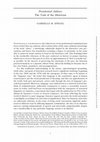
The American Historical Review, Feb 1, 2009
TRADITIONALLY, FOR HISTORIANS, the ethical core of our professional commitment has been a belief ... more TRADITIONALLY, FOR HISTORIANS, the ethical core of our professional commitment has been a belief that our arduous, often tedious labor yields some authentic knowledge of the dead "other," a knowledge admittedly shaped by the historian's own perceptions and biases, but nonetheless retaining a degree of autonomy, in the sense that it cannot be made entirely to bend to the historian's will. This founding belief in the irreducible otherness of the past conferred on history its proper function, which was to recover that past in as close an approximation of "how it actually was" as possible. In the interest of preserving the autonomy of the past, the historian practiced modesty as a supreme ethical virtue, discreetly holding in abeyance his or her own beliefs, prejudices, and presuppositions. Yet this traditional understanding of the nature, epistemological grounding, truth-value, and goals of historical research faced a significant challenge beginning in the late 1960s and the 1970s with the emergence of what came to be known as the "linguistic turn," the belief that language is the constitutive agent of human consciousness and the social production of meaning, and that our apprehension of the world, both past and present, arrives only through the lens of language's precoded perceptions. Moreover, language, once understood as a relatively neutral medium of communication, sufficiently transparent to convey a reasonably accurate sense of reality, itself had been reconceptualized with the emergence of structural linguistics or semiotics, a movement that began with the publication in 1916 of Ferdinand de Saussure's Course in General Linguistics. Far from reflecting the social world of which it is a part, language, Saussure argued, precedes the world and makes it intelligible according to its own rules of signification. Since for Saussure such rules are inherently arbitrary, in the sense of being social conventions implicitly understood in different ways by differing linguistic communities, the idea of an objective universe existing independently of speech and universally comprehensible despite one's membership in any particular language system is an illusion. 1
Ayer, 2006
... en historia ha mostrado que es imposible caracterizar los temas, objetos y prácticas cultural... more ... en historia ha mostrado que es imposible caracterizar los temas, objetos y prácticas culturales en términos inmediatamente sociológicos y, además ... y, sobre todo, EP Thompson, venían expresando una insatisfacción similar con res-pecto a la explicación en exceso ...

History and Theory, May 1, 2000
Kathleen Biddick, author of The Shock of Medievalism, is widely known to medievalists as a histor... more Kathleen Biddick, author of The Shock of Medievalism, is widely known to medievalists as a historian who attempts to wed medieval historiography with a wide variety of critical theories. In that sense, the book possesses considerable symptomatic value for an assessment of the success of Biddick's historiographical project: its ability to create new insights or, alternatively, its tendency to obfuscate by imposing on the historical material a body of theory whose pertinence to the topics under discussion is by no means obvious. This essay will attempt to evaluate the gains and losses generated by Biddick's theoretical project and then to draw out their implications for the wider practice of historiography at the turn of the millennium. To do so, we must begin with a review of the claims embedded in The Shock of Medievalism, claims that focus specifically on medieval historiography but that might, one is made to feel, equally be made for the study of almost any period of Western civilization. The "shock" to medievalism designated in the book's title results, in Biddick's view, from the "isolating methodologies" used to establish medieval history as a professional discipline in the nineteenth century. This professionalization of history created boundaries between the historical objects valorized by a "scientific," positivist practice, technically imbibed through university education, and all remaining topics thereby excluded from the discipline, matters that were relegated to the status of "medievalism," as opposed to the genuine medieval artifacts studied by professional historians. "Medievalism," thus, is the label applied to all those "others," a "fabricated effect of the newly forming medieval studies," its "despised. .. exteriority" (2). The governing premise of Biddick's book is that the drawing of this boundary between medieval historiography and "medievalism" amounted to an "abiding historical trauma," one that continues to haunt the practice of medieval history down to our own day. No longer merely the carving out of a field of inquiry, the creation of the discipline inflicted a profound psychological wound that, in the psychoanalytic terminology favored by Biddick, has never been "worked through" because it has never been acknowledged. Professional medievalists, therefore, today labor under the sign of that melancholia which Freud identified as the psychic symptom of unresolved trauma, the trauma caused by the "disciplinary wound" of professionalization. Biddick rejects the argument that the rupture between "scientific" medieval studies and "non-scientific medievalism" has been largely repaired over the last decades by the emergence of a "new medievalism" apparent in novel critical and

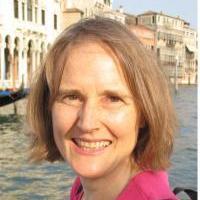
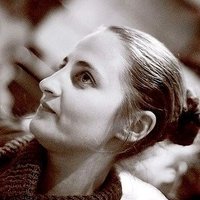
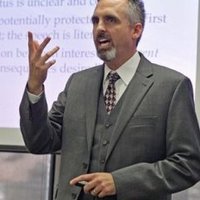





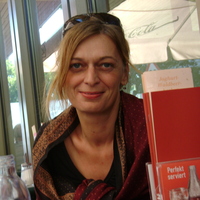

Uploads
Papers by Gabrielle Spiegel